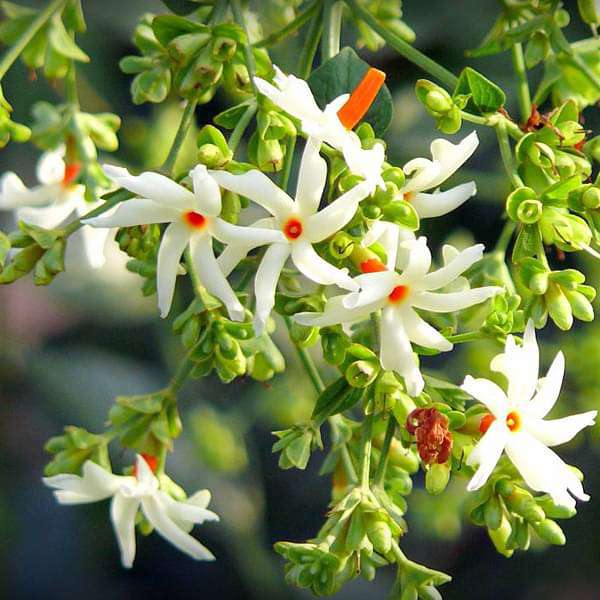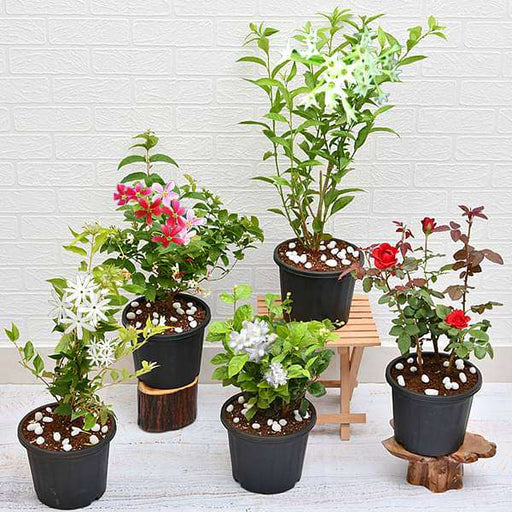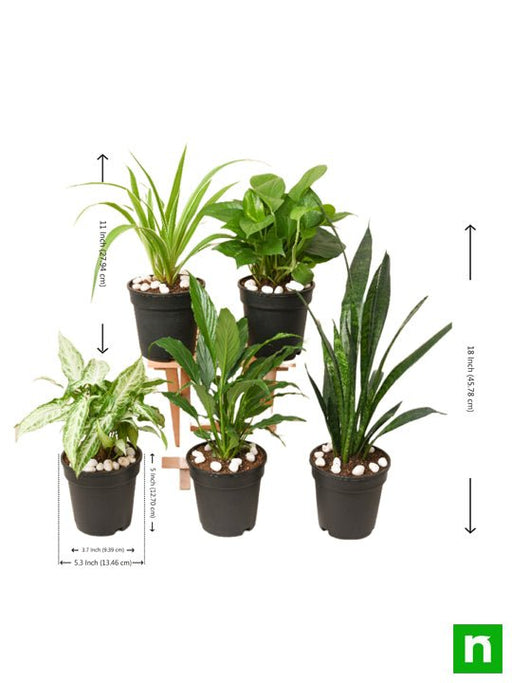Parijatak Tree
The Parijatak tree, also known as the Harshringar, is the diva of West Bengal's flora. With its fragrant, star-shaped flowers, it’s like nature’s own perfume bottle, ready to spritz joy into your garden. This tree is not just a pretty face; it’s a symbol of love and devotion in Indian culture. Imagine planting one in your backyard and having it serenade you with its sweet scent every evening. Talk about a romantic ambiance! Plus, it’s a low-maintenance superstar, thriving in various soil types. So, if you’re looking to add a touch of elegance and fragrance to your landscape, the Parijatak tree is your go-to green companion.
Harshringar Benefits
The Harshringar, or Parijatak, is not just a pretty flower; it’s a wellness wonder! This botanical beauty is known for its medicinal properties, making it a favorite among herbal enthusiasts. From soothing headaches to aiding digestion, this flower is like your personal health guru, minus the yoga mat. Its leaves are often brewed into teas that promise to detoxify and rejuvenate. Plus, let’s not forget its role in traditional rituals, where it’s believed to bring good luck and prosperity. So, if you want a plant that’s both beautiful and beneficial, the Harshringar is your floral friend.
Flowering Season
The flowering season of the Parijatak tree is like a grand festival in your garden. Typically blooming in the monsoon months, it transforms your outdoor space into a vibrant spectacle of yellow and white blossoms. It’s as if the tree is throwing a party, inviting all the bees and butterflies to join in the fun. The flowers, with their intoxicating fragrance, can turn even the dullest of days into a fragrant fiesta. So, mark your calendars and get ready to celebrate nature’s artistry when the Parijatak decides to flaunt its floral finery!
Cultural Significance
In West Bengal, the Parijatak flower is more than just a pretty bloom; it’s steeped in cultural significance. Often associated with love and devotion, it finds its way into various rituals and celebrations. Think of it as the romantic hero of the plant world, often featured in poetry and songs. Its presence in weddings and festivals adds a touch of elegance and tradition, making it a must-have for any cultural enthusiast. So, if you want to impress your friends with your knowledge of local flora, drop some Parijatak trivia at your next gathering!
Growing Conditions
The Parijatak tree is the ultimate diva when it comes to growing conditions. It thrives in well-drained soil and loves a good dose of sunlight, but it’s not too picky. Whether you live in a tropical paradise or a slightly cooler climate, this tree adapts like a pro. Just make sure to give it enough space to spread its branches and show off its stunning flowers. With minimal care, you’ll have a flourishing Parijatak that will make your neighbors green with envy. So, roll up your sleeves and get ready to cultivate your very own floral masterpiece!
Propagation Methods
Propagating the Parijatak tree is like playing matchmaker in the plant world. You can do it through seeds or cuttings, and both methods are surprisingly easy. If you’re feeling adventurous, try taking a cutting from a mature tree and watch it grow into a new beauty. Just remember to give it some love and attention, and soon you’ll have a mini Parijatak of your own. It’s a fun project that not only beautifies your space but also gives you bragging rights as a plant parent. So, grab your gardening gloves and get ready to spread the Parijatak love!
Pests and Diseases
Like any diva, the Parijatak tree has its share of admirers and detractors. While it’s generally hardy, it can occasionally attract pests like aphids and mealybugs. But fear not! A little neem oil or insecticidal soap can send those uninvited guests packing. As for diseases, root rot can be a concern if the soil is too soggy. So, ensure proper drainage, and your Parijatak will thrive like the star it is. With a bit of vigilance, you can keep your tree healthy and happy, ensuring it continues to dazzle with its fragrant blooms.
Landscaping Ideas
The Parijatak tree is a landscape designer’s dream come true. Its stunning flowers and lush foliage make it a perfect focal point in any garden. Imagine a serene corner with a Parijatak tree providing shade while its fragrant blooms waft through the air. Pair it with some colorful shrubs or ground cover, and you’ve got a picturesque scene straight out of a gardening magazine. Whether you’re going for a tropical vibe or a traditional look, the Parijatak can adapt and enhance your outdoor space. So, unleash your inner landscape artist and let this tree steal the show!
Environmental Benefits
The Parijatak tree is not just a pretty face; it’s an environmental hero too! By planting this tree, you’re contributing to biodiversity and providing a habitat for various pollinators. Its lush canopy offers shade, helping to cool the surrounding area and reduce the urban heat island effect. Plus, it plays a role in improving air quality by absorbing carbon dioxide and releasing oxygen. So, while you’re enjoying the beauty of the Parijatak, you’re also doing your part for Mother Earth. It’s a win-win situation that makes you feel good about your gardening choices!
Symbolism
The Parijatak flower is a symbol of love, beauty, and devotion in many cultures. Often associated with divine love, it’s like the Cupid of the plant kingdom, spreading romance wherever it blooms. In folklore, it’s said that the flower can grant wishes, making it a favorite among those seeking a little extra magic in their lives. So, if you’re looking to add a touch of symbolism to your garden, the Parijatak is the perfect choice. It’s not just a flower; it’s a conversation starter, a romantic gesture, and a sprinkle of enchantment all rolled into one!
Care Tips
Caring for the Parijatak tree is as easy as pie, or should we say, as easy as planting a flower? This low-maintenance beauty thrives with minimal fuss. Just ensure it gets plenty of sunlight, water it moderately, and give it a little fertilizer during the growing season. Pruning is also essential to keep it looking its best and to encourage new growth. With these simple care tips, you’ll have a flourishing Parijatak that will be the envy of your neighborhood. So, roll up your sleeves and get ready to nurture your new floral friend!













































